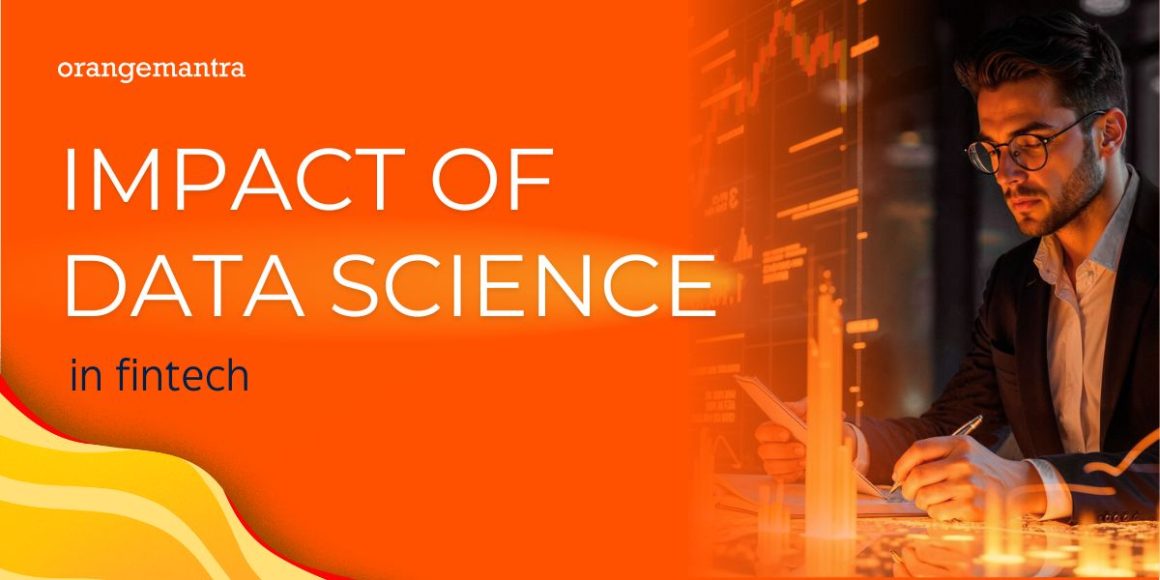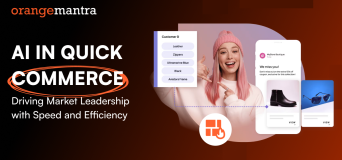Did you know that organizations lose up to 5% of their annual revenue to fraud? With financial transactions increasing in complexity, fintech companies rely on data science to protect assets and detect suspicious activity in real-time.
The financial world has changed forever with the rise of data science. Banks and payment companies that once relied on manual reviews now use smart computer systems to spot problems before they happen. Data science consulting company combines math, statistics, and computer skills to make sense of huge amounts of financial information.
For fintech companies – those blending finance and technology – data science has become their secret weapon against fraudsters. As more people use digital payments and online banking, the need to protect these transactions has become necessary.
Financial companies now use advanced systems powered by artificial intelligence (AI) and machine learning (ML) to watch over millions of transactions every minute. These systems can spot unusual patterns that might signal fraud faster than any human could.
The Role of Data Science in Fintech
The relation between data and finance has created revolutionary ways to manage money and protect customers. A data science consulting company serves as the backbone of modern financial services, turning raw information into powerful tools for security and growth.
Understanding Data Science in Finance
Data science in fintech means using computer power to analyse massive amounts of financial data. This helps companies make better decisions, spot risks early, and protect customers.
Banks and payment companies collect data from many sources—transaction records, customer profiles, website visits, and even social media. A data science consulting company can use this information to create models that can predict financial risks and spot fraud attempts.
The financial industry now handles more data than ever before. A single bank might process millions of transactions daily across different channels—mobile apps, websites, ATMs, and in-person banking. Data science helps make sense of this ocean of information.
How Financial Companies Use Data Science
Financial institutions use data science in several key ways:
- Fraud detection systems that automatically flag suspicious transactions
- Risk assessment tools that evaluate loan applications in seconds
- Customer service systems that spot problems before customers complain
- Investment models that help manage portfolios and reduce risks
These applications share one goal: using data to make financial services safer, faster, and more reliable for everyone.
Fraud Detection and Prevention with Data Science
With growing digital transactions threats are equally increasing. A FinTech app development company now deploys sophisticated data science tools that work tirelessly to identify and stop fraudulent activities before they cause damage.
Machine Learning for Fraud Detection
Machine learning has transformed how we catch financial criminals. Traditional fraud detection relied on fixed rules—like flagging purchases over a certain amount or transactions from unusual locations. These rules worked but were too rigid and created many false alarms.
Today’s ML systems learn from each transaction they process. They build detailed profiles of normal customer behaviour and can quickly spot when something doesn’t look right. If you normally buy coffee near your home but suddenly make expensive purchases in another country, the system notices immediately.
The beauty of these systems is they keep improving. Each time they correctly identify fraud, they get better at spotting similar attempts in the future. This creates a constantly evolving defense against financial crimes.
Real-Time Transaction Monitoring
Modern financial app security services work at lightning speed. When you tap your card or send money online, fraud detection systems analyze that transaction in milliseconds before approving it.
This real-time monitoring uses predictive analytics—looking at patterns to guess what might happen next. The systems consider hundreds of factors for each transaction:
- Is this purchase similar to your past spending?
- Does the location make sense based on your history?
- Is the merchant one you’ve used before?
- Does the timing match your usual habits?
If enough warning signs appear, the system can block the transaction or request additional verification, all within seconds. This stops fraud before money changes hands, not after.
Case Studies of Fraud Prevention
PayPal handles over $1 trillion in payments annually across more than 400 million accounts. They use an AI-powered system that examines more than 100 variables for every transaction. This system has helped PayPal keep fraud rates remarkably low despite their massive transaction volume.
Their system doesn’t just look at individual transactions—it studies the connections between users, creating a map of relationships that helps identify fraud rings and suspicious patterns across multiple accounts.
Danske Bank, Denmark’s largest bank, faced rising fraud levels until they implemented a new ML system. Their results were impressive: false positives (legitimate transactions wrongly flagged as suspicious) dropped by 60%, while fraud detection improved by 50%. The system also reduced the time needed to identify fraud from hours to minutes.
Risk Assessment and Credit Scoring
Beyond fraud detection, data science has revolutionized how financial institutions evaluate risk and determine creditworthiness. New approaches are opening doors for underserved populations while helping lenders make smarter decisions.
Traditional vs. Modern Credit Scoring

For decades, banks relied on credit scores based mostly on payment history and debt levels. This system worked for people with established credit but left many others unable to get loans—even if they were financially responsible.
Data science has created better ways to judge creditworthiness. Modern scoring systems can look at:
- Rent and utility payment history
- Income stability patterns
- Professional credentials and employment history
- Even how completely someone fills out a loan application
This broader view helps lenders make better decisions and opens doors for people traditional scoring might overlook.
Alternative Data Sources
A Fintech app development company now looks beyond traditional financial records when making lending decisions. Some examples include:
- Analyzing phone usage patterns (with permission) to assess responsibility
- Looking at regular bill payments not reported to credit bureaus
- Checking online shopping behavior to gauge spending habits
- Evaluating small business metrics like inventory turnover
These alternative data points create a more complete picture of financial health. A person might have no credit history but show other strong signs of responsibility that traditional systems would miss.
Real-Time Risk Analysis

Bank of America has developed systems that can spot early warning signs of credit problems. Their AI models can identify customers who might face financial trouble months before it happens. This allows the bank to offer help—like restructured payment plans—before customers miss payments or default.
This approach benefits everyone: customers avoid credit damage, and banks reduce loan losses. It represents a shift from simply reacting to problems toward preventing them entirely.
Enhancing Security with Network Analysis & NLP
The most advanced fintech security systems go beyond individual transaction monitoring. They employ sophisticated techniques that analyze connections between accounts and even understand the nuances of human language.
Network Analysis Finds Hidden Connections
Financial crimes rarely happen in isolation. Money launderers, fraudsters, and other criminals often work in networks, moving money through multiple accounts to hide their activities.
Network analysis uses data science to map relationships between accounts, transactions, and people. It can reveal hidden connections that might signal criminal activity:
- Unusual patterns of money moving between accounts
- Circular transaction paths where money returns to its source
- Multiple accounts sharing contact information or IP addresses
- Relationships between previously known fraud cases and new accounts
These techniques have helped financial institutions uncover complex fraud schemes that might otherwise go undetected.
Natural Language Processing Reads Between the Lines
Natural Language Processing (NLP) lets computers understand human language. In fintech, this technology has several powerful applications:
- Analyzing customer complaints to identify potential fraud
- Scanning emails and messages for phishing attempts
- Reviewing insurance claims for suspicious wording
- Checking compliance documents for regulatory issues
Lemonade, a digital insurance company, uses NLP in its claims process. Their AI assistant can analyze claim descriptions and supporting documents to spot potential fraud indicators. For honest claims, this means faster payments—some in as little as three seconds. For suspicious claims, the system flags them for human review.
The Future of Data Science in Fintech Security
As technology evolves and threats become more sophisticated, the next generation of financial security tools is already taking shape. The coming years promise exciting advances that will further transform how we protect financial systems.
Combining AI and Blockchain
The next wave of fintech security enhancement will likely combine AI with blockchain technology. While AI provides the intelligence to spot suspicious patterns, blockchain offers a tamper-proof record of all transactions.
This combination creates systems where:
- Every transaction leaves a permanent, unalterable record
- Smart contracts automatically enforce security rules
- AI continuously monitors for unusual patterns
- Decentralized verification makes large-scale fraud harder to execute
Several major banks are already testing these hybrid systems for international transfers and trade finance.
Emerging Trends
The financial security landscape continues to evolve rapidly. Some emerging trends include:
- Voice recognition systems that can verify customers while detecting stress or coercion
- Behavioural biometrics that recognize users by how they type or hold their phones
- Federated learning systems that improve fraud detection without sharing sensitive customer data
- Quantum computing defences against future hacking threats
These technologies promise even stronger protection against financial crimes in the coming years.
Challenges Ahead
Despite these advances, fintech security faces important challenges:
Data privacy concerns continue to grow as systems collect more personal information. Companies must balance security needs with privacy rights and changing regulations like GDPR and CCPA.
User experience remains crucial—security measures that frustrate customers may drive them away. The most successful systems protect users without creating noticeable friction.
Fraudsters adapt quickly to new defences. As security systems improve, criminal techniques evolve to match. This creates an ongoing race between security teams and those trying to defeat them.
Conclusion
Data science has fundamentally changed how financial companies protect themselves and their customers. The combination of massive data processing power and sophisticated AI has created security systems that would have seemed impossible just a decade ago.
For financial institutions, embracing these technologies isn’t optional—it’s essential for survival. Customers expect seamless, secure experiences, and only data-driven security can deliver both.
The future will bring even more powerful tools for financial security as AI capabilities grow and new technologies emerge. The financial companies that thrive will be those that continuously adapt their security approaches to stay ahead of evolving threats.
Interested in implementing AI-powered fraud detection for your fintech business? Contact OrangeMantra as your data science consulting company for cutting-edge solutions that can protect your customers and your business from financial fraud.



